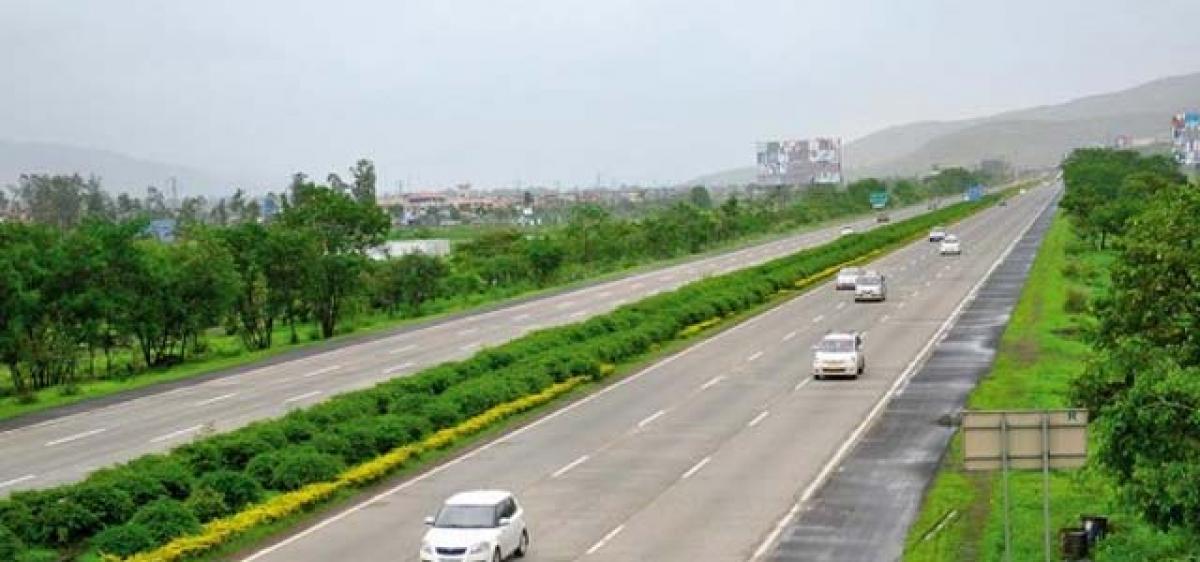Live
- Nara Bhuvaneshwari to File Nomination Papers on Behalf of TDP Chief Chandrababu in Kuppam
- YS Jagan's Memanta Siddham Bus Yatra begins in Rajapuram, to enter Kakinada by evening
- Not just promises, look for capacity to deliver them
- Sujana Chowdary files papers for Vijayawada West
- TDP-BJP-JSP leaders file Lokesh’s nomination
- Hyderabad: Opposition indulging in divisive politics says BJP MP Laxman
- Ajith Kumar shows up to vote 30 minutes before time; Rajini stresses 'dignity in voting'
- Velapalli, Bonda Uma engage in war of words on stone incident
- Accused in stone pelting case arrested
- Watch The Viral Video Of A Woman Wearing Bikini Into Crowded Delhi Bus
Just In

Highways constitute the critical infrastructure in a modern economy. Greening initiative can transform this vital infrastructure into an instrument to combat climate change. The Ministry of Road Transport and Highways deserves appreciation for launching a mega National Green Highways Mission.
Highways constitute the critical infrastructure in a modern economy. Greening initiative can transform this vital infrastructure into an instrument to combat climate change. The Ministry of Road Transport and Highways deserves appreciation for launching a mega National Green Highways Mission.
The objective of this Green Mission is not just creating beautiful highways but to ensure environmental benefits. The National Highways Authority of India mulls raising agro–forests that would meet the raw material needs of the industry.
It creates a carbon sink to absorb carbon dioxide from the atmosphere. As the heavy vehicles that run on these highways are still highly polluting, such a carbon sink would contribute to environmental sustainability.
Estimates suggest that 14.1 per cent of all the green house gas emissions globally emanate from the transport sector only, indicating the importance of greening the highways. Highways though constituting only 2 per cent of Indian road network account for 40 per cent of total traffic.
According to a government study done in 2010, the transport sector in India is estimated to emit 142.04 million tonnes of CO2 equivalent, of which73.1 per cent is from road transport alone.
Growing and maintaining trees along these large stretches of Indian highways has a potential to generate livelihood and resources to the local people. Official estimates suggest that on an average the greening highways would provide 4,000 man-days of employment per km in plantation and management activities. The National Green Highway Policy of 2015 rightly emphasises the need to develop eco-friendly highways with local participation and wider stakeholder involvement.
In fact, this is not just a modern innovation. It was India’s ancient wisdom that taught us to line the highways with green plantation that provides the passers-by a pleasant experience. The edicts of Emperor Ashoka exhort us to grow fruit and shade trees along the highways.
The Green Highways Mission would in fact help in meeting India’s Intended Nationally Determined Contribution (INDC) targets to fight the climate change. The Green Highways Mission should be effectively integrated with value addition activities so that wood will be available for local manufacturing. The local communities can use the fruit and flower tress for economic gains. Even medicinal plants can be grown, which can add to the local economy.
The raw materials provided by the mission can also be useful for developing food processing and bamboo-based industries and other agri business enterprises.
But, green highways do not alone suffice. They should be complemented by a host of measures like use of eco-friendly technologies and materials in the construction of highways, energy-efficient automobiles, solar street lighting, while encouraging use of cleaner fuels and proper management of storm water from roads etc.
The Green Highways Mission cannot be a centralised programme. It should appreciate the diverse agro climatic conditions prevailing in India. Besides, about 15 per cent Indian national highways pass through forests and, therefore, special attention to wildlife conservation should be incorporated in the programme.
For instance, Washington state in United States constructed underpasses for animals. Environmental sustainability practices should be incorporated into all aspects of highways development including design, material usage, etc.

© 2024 Hyderabad Media House Limited/The Hans India. All rights reserved. Powered by hocalwire.com







